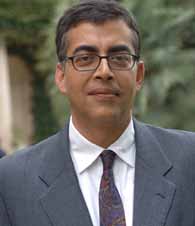But its logic was fatally flawed, for two
reasons. First, in the absence of plans
for integrating the two operations
through parts commonality et cetera,
the belief that economies of scale
would be achieved was akin to
thinking that strapping two leaky
canoes together would somehow
increase their buoyancy.
Second and even more remarkably,
looking at the data would have
revealed that concentration has
actually declined more or less
continuously in the auto industry
since World War II. Its big structural
problem today is fragmentation and
overcapacity as a result of too much
entry and too little exit. And the
difference matters: in a fragmented
industry subject to excess capacity, a
megamerger takes on the flavor of
paying privately for the costly goodspread
across all the firms in an
industry-of removing a major
competitor from the scene. Nice for
one's competitors, but not
necessarily for one's shareholders.
For an example of blander, let me
focus not on a company that has
made particularly egregious blunders
overseas, but one whose strategy
overseas does present a marked
contrast to the power of its domestic
strategy. The company is Wal-Mart,
which I've studied and written about
for more than 20 years.
When CEO Lee Scott was asked a few
years ago about why he thought Wal-
Mart could expand successfully
overseas, his response was that
naysayers had also questioned the
company's ability to move
successfully from its home state of
Arkansas to Alabama. As I already
pointed out, such trivialization of
international differences greases the
rails for competing exactly the same
way overseas at home. Which has
turned out to be a recipe for losing
money in markets very different from
the United States: as the former head
of the company's German operations,
now shut down, plaintively
observed, "We didn't realize that
pillowcases are a different size in
Germany." Unsurprisingly, the
foreign markets in which Wal-Mart
has achieved profitability-Canada,
Mexico and the United Kingdom-are
the ones culturally, administratively
and geographically closest to the
United States. The point is not that
Wal-Mart shouldn't have ventured
into more distant markets, but rather,
that it needed to think differently
about how to compete in them. As it
is now starting to do in markets such
as India.
-
What's an example of a company
that gets global strategy right? Why?
Take the example of Toyota, which
has overtaken General Motors to
become the largest automaker in the
world-while making money in the
process. Toyota is distinguished
from most of Western automakers,
not just DaimlerChrysler, by the fact
it treats market share as the result of
building better cars more cheaply
than its competitors, and not as an
objective in and of itself. Its
globalization has actually been
driven by a complex array of
coordination mechanisms across
different regions, which Chairman
Fujio Cho characterizes as the
fundamental building blocks of the
company's strategy. Note that
Toyota's starting point is not a grand,
longer-term vision of some distant
globality when autos and auto parts
can flow freely from anywhere to
anywhere. Rather, the company
anticipates expanded free-trade
agreements within the Americas,
Europe, and East Asia, but not
across them. This is a more modestbut
also more realistic-vision of a
semiglobalized world in which
neither the bridges nor the barriers
between countries can be ignored.
[Could add stuff on other examples:
Cemex, Tata Consultancy Services,
GE Healthcare]
